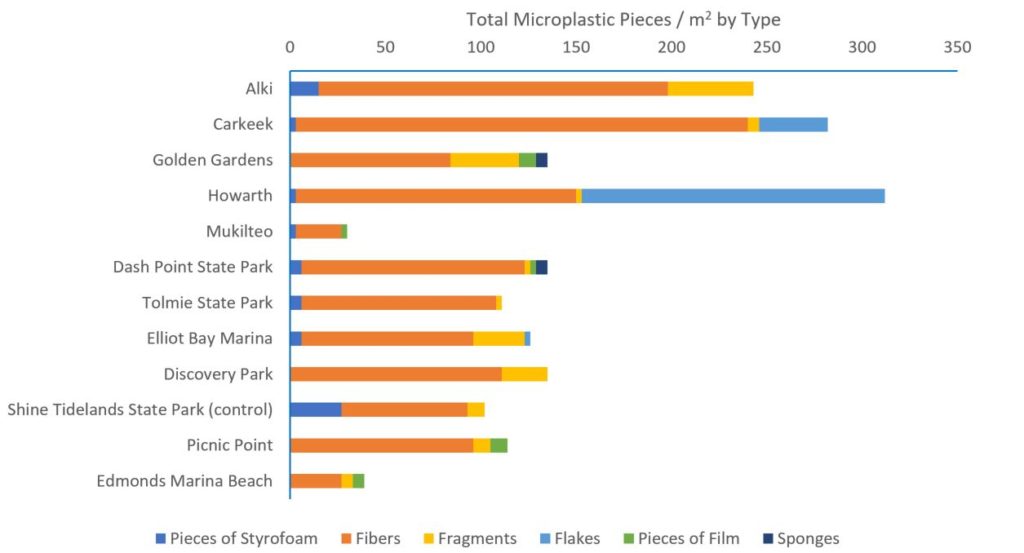A University of Washington student tested levels of microplastics on Puget Sound beaches, and found Carkeek Park had the second highest levels of the 12 beaches surveyed.
Oceanography undergraduate Frances Eshom-Arzadon’s year-long senior thesis research project tested for plastics between 0.3 and 5 millimeters in size, which is smaller than a grain of rice. The materials she found were styrofoam, fibers, fragments, flakes, pieces of film and sponges; the study showed that the most common material found is polar fleece and other synthetic fibers.
Eshom-Arzadon gathered data between November and February, visiting each beach once at the same time in the tidal cycle. The samples were scraped from an area just below the tide line, which she then dried, separated, and recorded.
“All of these beaches are cleaned by volunteer groups, and it’s not clear which are cleaned more regularly,” Eshom-Arzadon told UW News. “Ocean currents can also carry debris to different places, and can affect how much litter you would find in a one-time sampling.”
The highest level of plastics came from Howarth Park in Everett, where she found over 300 pieces per square meter. Second highest was Carkeek, followed by Alki. From the 12 sites she surveyed, Eshom-Arzadon found an average of 1,776 pieces per 3-foot-square sampling plot. The cleanest beaches were Mukilteo Lighthouse Park and Edmonds Marina Beach.
Ballard’s Golden Gardens was also on the list, with the fifth-highest levels of plastics; most of which were also microfibers.
For more on Eshom-Arzadon’s research results, click here.
Graph by Frances Eshom-Arzadon



Oceanography undergrad Frances Eshom-Arzadon’s extended senior postulation research project tried for plastics somewhere in the range of 0.3 and 5 millimeters in size, which is more modest than a https://www.rushessay.com/case_study.php materials she found were styrofoam, strands, parts, chips, bits of film and wipes; the review showed that the most widely recognized material found is polar downy and other manufactured filaments.